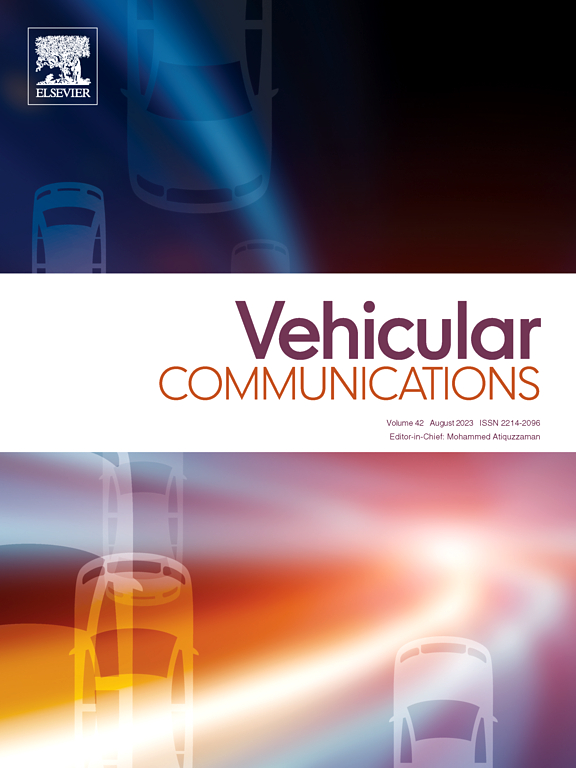Computational intelligence-based routing schemes in flying ad-hoc networks (FANETs): A review
IF 6.5
2区 计算机科学
Q1 TELECOMMUNICATIONS
引用次数: 0
Abstract
Recently, the rapid development of wireless technologies, low-priced equipment, advances in networking protocols, and access to modern communication, electrical, and sensing technologies have led to the evolution of flying ad hoc networks (FANETs). However, the high movement of unmanned aerial vehicles (UAVs) in these networks causes iterated failures of communication links and constant changes in network topology. These features challenge the design of a proper routing protocol in FANETs. Today, computational intelligence (CI) techniques are rapidly developing as a mighty and intelligent computing model. This promising technology can be used to improve various applied areas, especially routing in FANETs. This paper examines and assesses various CI-based routing techniques in FANETs. Accordingly, this paper introduces a classification of CI-based routing protocols for FANETs. This categorization includes three groups: learning system-based routing methods (including artificial neural networks, reinforcement learning, and deep reinforcement learning), fuzzy-based routing schemes, and bio-inspired routing schemes (evolutionary algorithms and swarm intelligence). Subsequently, based on the offered classification, the most recent CI-based routing methods and their key features are outlined. Ultimately, the opportunities and challenges in this area have been mentioned to help researchers familiarize themselves with future research directions in CI-based routing algorithms for FANETs and work toward improving these methods in such networks.
基于计算智能的飞行自组织网络路由方案综述
最近,无线技术的快速发展、低价格的设备、网络协议的进步以及现代通信、电气和传感技术的普及导致了飞行自组织网络(fanet)的发展。然而,无人机在这些网络中的高度移动导致通信链路的迭代故障和网络拓扑的不断变化。这些特点对在fanet中设计合适的路由协议提出了挑战。如今,计算智能(CI)技术作为一种强大的智能计算模型正在迅速发展。这种有前途的技术可以用于改进各种应用领域,特别是在fanet中的路由。本文研究并评估了fanet中各种基于ci的路由技术。据此,本文对基于ci的fanet路由协议进行了分类。这种分类包括三组:基于学习系统的路由方法(包括人工神经网络、强化学习和深度强化学习)、基于模糊的路由方案和生物启发的路由方案(进化算法和群体智能)。随后,基于所提供的分类,概述了最新的基于ci的路由方法及其关键特性。最后,提到了该领域的机遇和挑战,以帮助研究人员熟悉基于ci的fanet路由算法的未来研究方向,并努力改进此类网络中的这些方法。
本文章由计算机程序翻译,如有差异,请以英文原文为准。
求助全文
约1分钟内获得全文
求助全文
来源期刊

Vehicular Communications
Engineering-Electrical and Electronic Engineering
CiteScore
12.70
自引率
10.40%
发文量
88
审稿时长
62 days
期刊介绍:
Vehicular communications is a growing area of communications between vehicles and including roadside communication infrastructure. Advances in wireless communications are making possible sharing of information through real time communications between vehicles and infrastructure. This has led to applications to increase safety of vehicles and communication between passengers and the Internet. Standardization efforts on vehicular communication are also underway to make vehicular transportation safer, greener and easier.
The aim of the journal is to publish high quality peer–reviewed papers in the area of vehicular communications. The scope encompasses all types of communications involving vehicles, including vehicle–to–vehicle and vehicle–to–infrastructure. The scope includes (but not limited to) the following topics related to vehicular communications:
Vehicle to vehicle and vehicle to infrastructure communications
Channel modelling, modulating and coding
Congestion Control and scalability issues
Protocol design, testing and verification
Routing in vehicular networks
Security issues and countermeasures
Deployment and field testing
Reducing energy consumption and enhancing safety of vehicles
Wireless in–car networks
Data collection and dissemination methods
Mobility and handover issues
Safety and driver assistance applications
UAV
Underwater communications
Autonomous cooperative driving
Social networks
Internet of vehicles
Standardization of protocols.
 求助内容:
求助内容: 应助结果提醒方式:
应助结果提醒方式:


